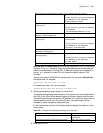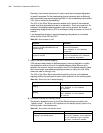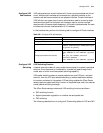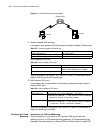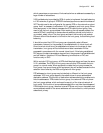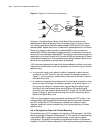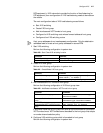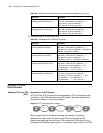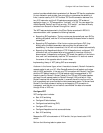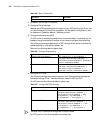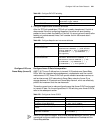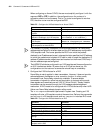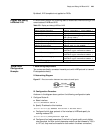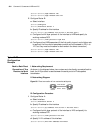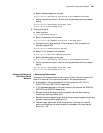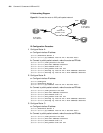Configure X.25 over Other Protocols 219
protocol provides reliable data transmission link. Because TCP has the mechanism
of error redirection and window flow controlling to guarantee the reliability of
links, it can be used by X.25. XOT builds a TCP tunnel connection between the
two X.25 networks, and the X.25 packets are supported by TCP as data of
application layer, i.e., TCP serves as the “link layer” of X.25. You can regard the
middle RouterB, RouterC and IP net as a big “X.25 switch”, and data is directly
switched from RouterA to RouterD through this “switch”.
The XOT features implemented in the 3Com Router accords with RFC1613
recommendation, and it possess the following features:
■ Supporting SVC application. The two routers can dynamically set up a SVC by
sending call packet, and the VC will automatically be cleared when no data is
transmitted.
■ Supporting PVC application. After the two routers configure a PVC, they
directly enter the data transmission status without the process of call
establishing. If no data is transmitted, this VC will not be cleared automatically.
■ Supporting the Keepalive attribute of TCP. If Keepalive is not configured, TCP
connection will not be cleared after a long period of time when the line is
disconnected. If Keepalive is configured, TCP check the usability of the links in
time, and it will automatically clear the TCP connection if it does not receive
the answer of the opposite side for certain times.
Implementing theory of XOT (taking SVC as an example):
As shown in the former figure, when it has data to transmit, RouterA first send a
request packet to set up a VC. After RouterB receive the call packet and judges
that it is XOT application, it first set up a TCP connection with RouterC, and then
stick the XOT packet header to X.25 call packet which is encapsulated in TCP
header to send to RouterC. RouterC takes off the TCP and XOT packet headers
and send the call request packet to RouterD through X.25 local switch. After
RouterD receives the call request packet, it answers the call to confirm until the
link is completely set up and enters the data transmission status. To RouterA and
RouterD, the whole process of setting up and applying TCP connection is
transparent, and they do not and cannot care whether the data is forwarded
through IP net or X.25 net.
Configure XOT
XOT configuration includes:
■ Start X.25 switching
■ Configure IP side interface
■ Configure local switching (SVC)
■ Configure XOT route
■ Configure Keepalive and xot-source attributes
■ Start X.25 switching
Because the XOT is the extension of X.25 switch, first you have to start X.25
switch.
Perform the following tasks in system view.



